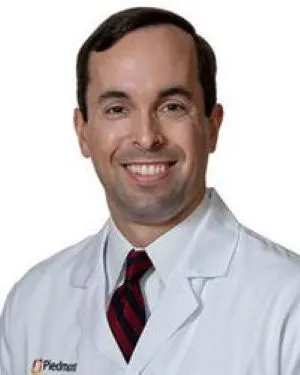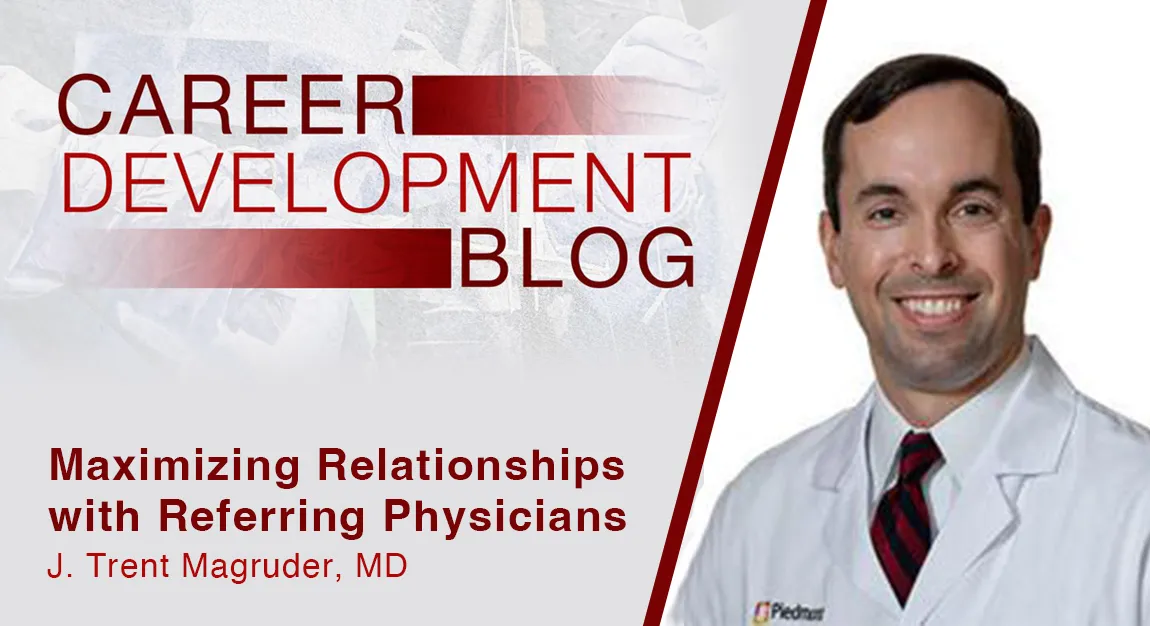- Understanding where patients come from—and building those networks—is essential, especially in community or smaller practices.
- Clear, respectful updates to referring providers, along with strong patient care and outcomes, strengthen ongoing relationships.
- Most challenges stem from knowledge gaps or system pressures; respectful dialogue and focusing on patient outcomes can resolve conflict and foster collaboration.
As a new cardiothoracic surgeon, interacting with referring providers can be a confusing and daunting experience at times. We have little training or exposure to this critical aspect of practice in residency and fellowship, yet it dramatically affects your success as a surgeon. In some larger and/or academic practices, referring networks and mechanisms may be well established; in smaller community practices, these relationships can determine your survival as a surgeon. Insights shared in this article aren’t intended to be comprehensive, but to provide a framework of helpful ideas to consider.
Goals

When working with referrings, remember that the central goal is to help patients get the care they need. Referring providers and physicians are seeking exactly that, of course – they have patients with problems, and they’d like you to help them get those problems addressed.
There’s a saying from our own STS Leadership Institute: assume positive intent. The vast, vast majority of referring providers are well-meaning and want the best for their patients (we’ll cover rare, difficult situations later). Just as many of us were taught in training that a consult is a plea for help, remember that a referral also reflects a provider trying to do the best they can for a patient in need. The more effectively and professionally you can deliver that help, the better your relationships with referrings will be.
Building a Network of Referrals
When considering a job, ask about their patient referral sources. Large centers may have a sizeable cardiologist or pulmonologist corps who provide most patients, while smaller centers may depend heavily on a patchwork network of diverse practices to generate referrals.
Understanding the nuts and bolts of how your practice gets patients is critical. In the former situation, you may not need to do much (or may even have surgeon leaders who decide what patients get sent to you), and this part of the blog may not be especially helpful. However, I’d argue that outreach and relationship building never hurt anyone, and in many practices, this is an essential step.
Some hospitals have outreach professionals who can help you coordinate visits to referrings’ offices. Brief visits during business hours are sometimes less intrusive for referrings than dinners (while it never hurts to offer, many providers would rather be home with their families in the evenings).
These visits are time-consuming but effective, and putting your best foot forward on these visits is important. Dress professionally and have an elevator pitch. Referrings will want to hear a bit about where you came from and trained, what your clinical interests and strengths are, and how you can help them.
It’s a good idea to ask them about their needs and challenges. For example, some providers may have a difficult time with transfers to your system, and as surgeons, we can often help facilitate these. Exchange contact information and do what you can to keep in touch periodically with providers. Referral patterns can be extremely difficult to change, so do not expect a single visit to result in large numbers of referrals, but remember that every visit creates an opportunity otherwise not taken.
It’s worth noting that your practice can be built more rapidly if you’re able to fill a unique and underserved niche. Offering services that other providers are unwilling or unable to provide can help you build your business. For example, you may have special training in robotics, or the Ross procedure, or something else unique not previously available to your referrings.
Other needs are not as glamorous, but still fill an important void. For example, I follow many aortic aneurysm patients. Some community practices send me predominantly octo- and nonagenarians with aneurysms who will never be operative candidates, but they feel more comfortable having a surgeon review their imaging and recommending conservative management (or even ceasing surveillance entirely). This is an easy task.
Fortunately, the same providers now also send good operative candidates from outside our usual catchment area, which has helped build volume. A similar area is robotic surgery; reaching out to outlying providers to let them know about our robotic CABG program has led to new referrals for both sternotomy and minimally invasive approaches.
Communication and Care
When you get a referral, the first two key tasks are to decide on a plan of care, and then communicate with the referring. We’re well-trained in the first task. Review records carefully, discuss the issues, interventions, risks, and benefits with the patient while taking close account of the patient’s preferences, and write a good note. (Remember that patients will go back to their referrings and tell them what they thought of you, so mind your bedside manner.)
Next, you’ll need to gauge what level of communication referrings expect. Most do not require an excess amount; a clinic note cc’d back to their office may be enough, or a short message to let them know what you’re planning. Some may want to be more involved, and I’ve never felt that a phone call, particularly for complicated or unusual cases, was not appreciated.
If it’s unclear, call and ask the referring what they think about the patient or what they’d like, and see what you can do to either deliver on that request.
The next step is to deliver high-quality, effective care. Don’t promise referrings operations that are not your strength. Involve senior partners if you need help, communicate well with patients and families, and ensure you have excellent outcomes. I like to communicate with my referrings immediately after surgery and often send pictures of interesting pathologies or parts of operations, which are very popular (beware HIPAA compliance, of course). Satisfied patients and families will tell their referrings about it, and that will help drive future referrals.
Handling Difficult Situations
We should mention that, as in any other professional setting, some conflicts are inevitable, and you invariably will not get along perfectly with every referring you interact with. While the vast, vast majority of referrings are excellent providers with the patient’s best interest at heart, some are busy and overwhelmed and may make pointed requests for specific care that is not in a patient’s best interest.
Often, these are due to knowledge deficits on the part of the referring, and most will be very receptive to polite but gentle discussion of the latest guidelines or evidence supporting a different approach than the one requested. Referrings will appreciate a different course that promises a better outcome for the patient and minimizes future problems.
Phone conversations are always helpful to clear up these misunderstandings. For example, not every patient referred for TAVR is best served with TAVR in light of other cardiac pathology; alternatively, some CABG referrals with poor function and many comorbidities may be better off with high-risk PCI at a high-volume institution, even if this is not with the original referring’s practice. Some lung cancer patients need surgery, while others may be better off with neoadjuvant treatment first or radiation.
We should all acknowledge that it can be difficult and awkward to politely tell a referring that there may be a better approach to a patient than what said referring may have already told the patient and requested from you. That being said, I’ve found the vast majority of referrings to be markedly receptive to education and discussion when delivered gently and framed as a better opportunity for a good patient outcome.
For the referrings you find difficult to interact with, you’ll have to decide on whether or not to continue the relationship. Some referrings can be quite demanding and insist on certain treatments, or attempt to set up quid pro quos about future referrals in an attempt to coerce you into helping them in some other way. It’s important to be professional but firm and do what you believe is right for the patient.
Also recall that these situations are very rare, fortunately, and often secondary to other stressors in a physician’s life. I try to remind myself of the grace others have given me when I was not at my best.
Handling adverse outcomes is another important part of effective communication with a referring. Be honest in advance when discussing a high-risk patient with a referring. Setting expectations up front is a critical part of the communication process. Similarly, be open and transparent when a patient’s results are suboptimal. Referrings appreciate honesty and accountability.
Developing relationships with referring providers can be a rewarding aspect of providing good care. Good communication at whatever level is expected is key, as is ensuring good outcomes. While you may encounter rare, difficult situations, nearly all referrings are just like us – hardworking providers seeking the best for their patients. Modern healthcare is a team sport, and interacting well with your referrings will help your practice blossom.
